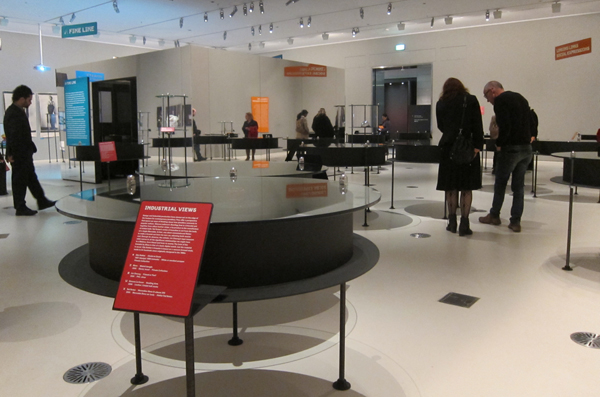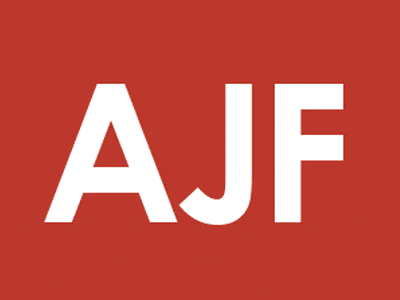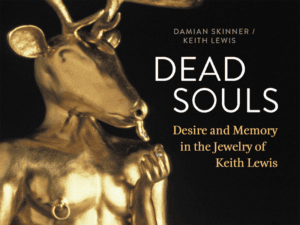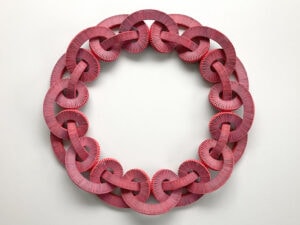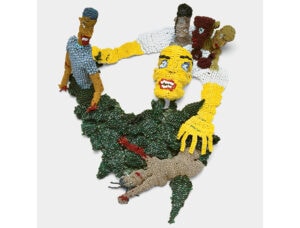To have an international exhibition of contemporary jewelry in the National Gallery of Victoria (NGV) – the first it has ever hosted – is quite a coup. In Unexpected Pleasures: The Art and Design of Contemporary Jewellery, an exhibition of 186 works by 126 makers from around the world, jeweler Susan Cohn has managed something many of us hope for – to have contemporary jewelry seen, represented and regarded in the context of art, not simply as a commodity or accessory. On viewing Unexpected Pleasures, it would be hard for one to argue against its place in this elite gallery. The caliber of the work is high and the range of technical skills broad, offering much to consider in the artistic aspects of contemporary jewelry.
Cohn has been making for more than thirty years and has curated a number of exhibitions during this time. Held in collections throughout Australia as well as in the United Kingdom, her own work at times crosses the borders of design (she worked with renowned Italian design house Alessi on projects in the 1990s).

Given that this exhibition was largely intended for an audience new to contemporary jewelry, Cohn presented work from the past 60 years or so to show how the medium has developed and to present an overview of contemporary jewelry and its origins, rather than focusing solely on new work and possible future trends or possibilities, though these were also represented. Unexpected Pleasures also offered a wonderful opportunity for makers to see a huge number of works all in one place, many for the first time outside of books or online.
Cohn kept the exhibition text to a minimum, preferring the viewer to bring as much of his or her own interpretation to the work as possible. The text that was included struck a good balance, offering ideas for contemplation and then letting the viewer decide what was valuable or relevant.
The exhibition was laid out in three sections. In the center of the space was a large, walk-through box, its outside walls covered in mirrors on three sides. This section was titled ‘A Fine Line’ and presented jewelry from various origins – art, craft, design and fashion – alongside pieces by makers of the contemporary jewelry movement such as Hermann Jünger and Otto Künzli. Unexpected Pleasures takes this as the origin of the medium as it is today.

The third section, ‘Worn Out,’ was again segmented into ‘Worn Out’ and ‘Worn Out: Photography’ (further categorized as ‘Body,’ ‘Propositions’ and ‘Jewellery Object’). Comprising upright cases housing large-scale neckpieces and a series of photographic and video works depicting people wearing jewelry, this section addressed a key element of jewelry which is often missing in its representation – its relationship with the body. The works in the ‘Worn Out: Photography’ section also highlighted how photography is used as an element of the work – whether to locate the piece (‘Body’) tell its story (‘Propositions’) or as the work itself (‘Jewellery Object’).
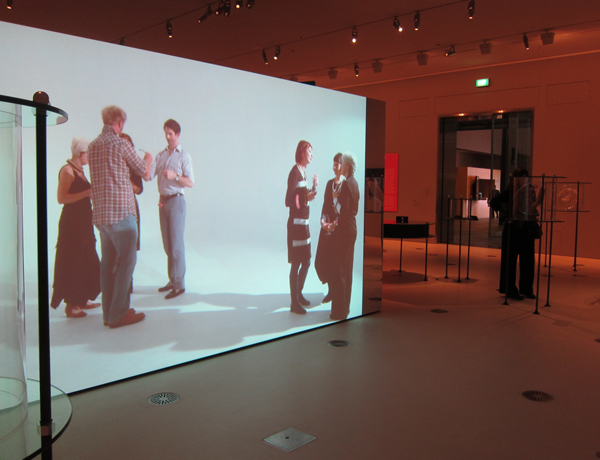
This relationship to the body was again emphasized in the display of the large neckpieces, which were shown at neck height so that one could view them at the level they would be worn. Transparent displays had the effect of suspending many of the works in space, allowing the viewer to see the pieces from all angles and perhaps imagine wearing it. This was also important from the jeweler’s perspective, as any maker knows how valuable it is to see the back of a piece, to gain insight on how something is made or to learn the secrets often hidden to all but the wearer. Dorothea Prühl’s neckpiece, Hawk, reveals the hollowness of the wooden pieces and the subsequent lightness of what at first glance seems a piece heavy and cumbersome to wear.
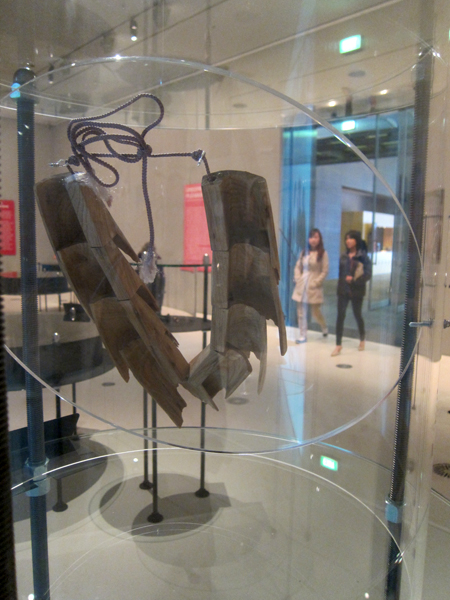
Contemporary jewelry is quite a close and closed world. When I was studying, I remember talking with a friend about how cut off we had felt from the ‘real world’ since beginning our studies; our realization that 99 percent of the people we spent time with were part of the ‘other,’ jewelry-centric world and how distorted that could make things seem. It’s easy to forget that what we do happens in what is almost a vacuum, so separate is it from everyday life. We noted how hard it was to explain what we did and why we did it and the many ways in which contemporary jewelry was different from that found in commercial stores. Even friends in other disciplines (though studio areas rarely had much to do with each other, apart from the occasional exhibition opening when we would check out the art on display as a tasty side to the free wine and cheese) had little understanding what was going on in our basement studios.
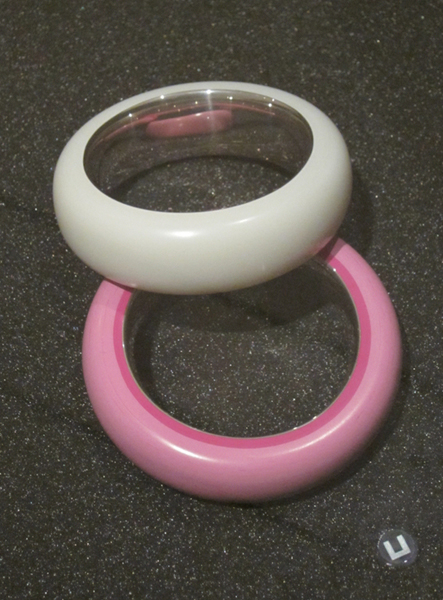
The well-balanced layout allowed for a flow through and around the space, letting each person to follow his or her own path. This meant that there was no emphasis placed on one particular theme or methodology. As Cohn states: ‘there is no ideal “how to” because no method is the only way of making.’ This may seem obvious to makers but it is an important point as it makes clear just how open the medium is and further distances it from traditional jewelry.
One of the first things that struck me about Unexpected Pleasures was the darkness of the space. The vast range of materials on show, from paper to diamonds, required strict adherence to museum lighting specifications. While there are obviously many benefits of showing contemporary jewelry in a high-profile space like the NGV, it also means working within an unusual set of parameters for exhibiting jewelry. This darkness made the detail in some of the work difficult to see, and gave the whole exhibition a rather serious tone, which seemed contradictory to the celebratory theme of the show. There is so much life in contemporary jewelry and in the relationship we have with it, the darkness felt heavy.
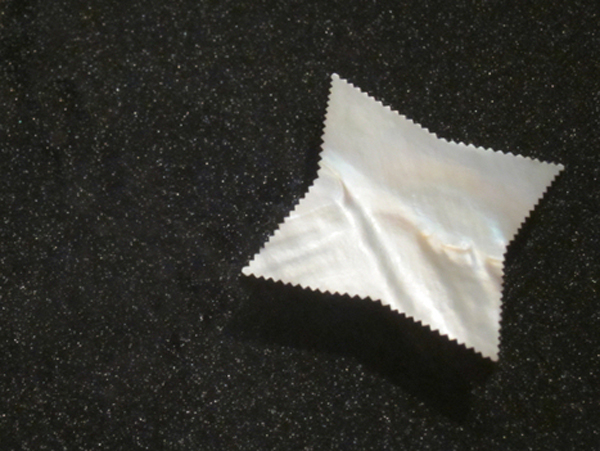
Viewers of international exhibitions will often make judgments about styles based on country of origin. Indeed, the question of which country is most represented is often the first thing to be examined or criticized in an exhibition such as this, as it is an easy thing to quantify. Cohn chose to omit the nationality of the maker in an attempt to keep the focus of the viewer on the makers and their work.
For newcomers to contemporary jewelry – and I’m sure for many makers – Unexpected Pleasures would have been a treasure-trove of new and challenging ideas and moments of surprise and joy. The reactions of these new viewers were interesting to overhear. Naturally, people first interpret contemporary jewelry by whether or not they would wear it; its purpose, by and large, is considered to be ‘just for decoration,’ as one mother explained to her young daughter. Cohn’s decision to show some pieces worn – in photos and on film – was effective in this as it shows how makers use contemporary jewelry to explore the boundaries of wearability.
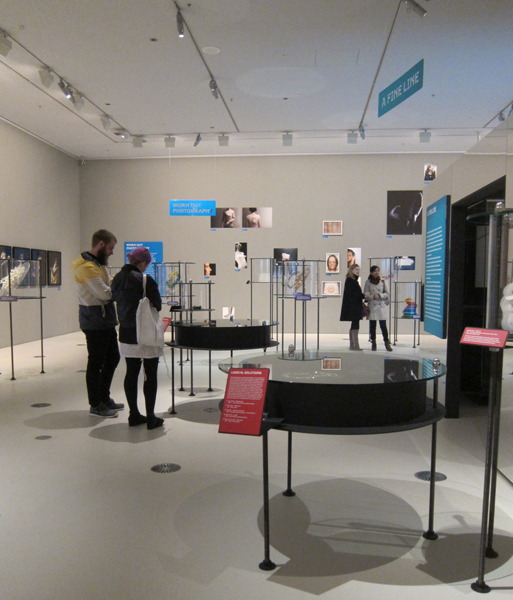
For several years now, the Royal Melbourne Institute of Technology (RMIT) one of Australia’s leading jewelry schools, has presented a symposium series titled ‘Practice as a Sight for Enquiry.’ This year, the focus was solely on Unexpected Pleasures, beginning with a talk from Cohn on how the exhibition came to be, offering insight into the business of organizing such an exhibition. For the vast majority of attendees this was an experience far removed from their own. The symposium allowed makers to directly engage with the design and choice of pieces and with the curatorial process.
Cohn contacted jewelers around the world requesting a maximum of seven images that each felt reflected their practice. Refining a life’s work is not an easy task for any maker, as she pointed out. From these thousands of images Cohn whittled it down to the 186 pieces eventually shown. Cohn herself acknowledged this method meant some pieces she really wanted to include were ultimately left out, as they were not offered in the original group of images.
